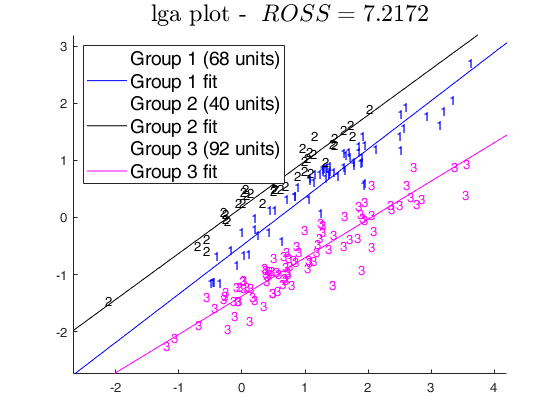lga
lga performs linear grouping analysis
Description
Examples
Input Arguments
Output Arguments
References
Van Aelst, S. and Wang, X. and Zamar, R. and Zhu, R. (2006), Linear Grouping Using Orthogonal Regression, "Computational Statistics and Data Analysis", Vol. 50, pp. 1287-1312.
 lga with all default options.
lga with all default options.